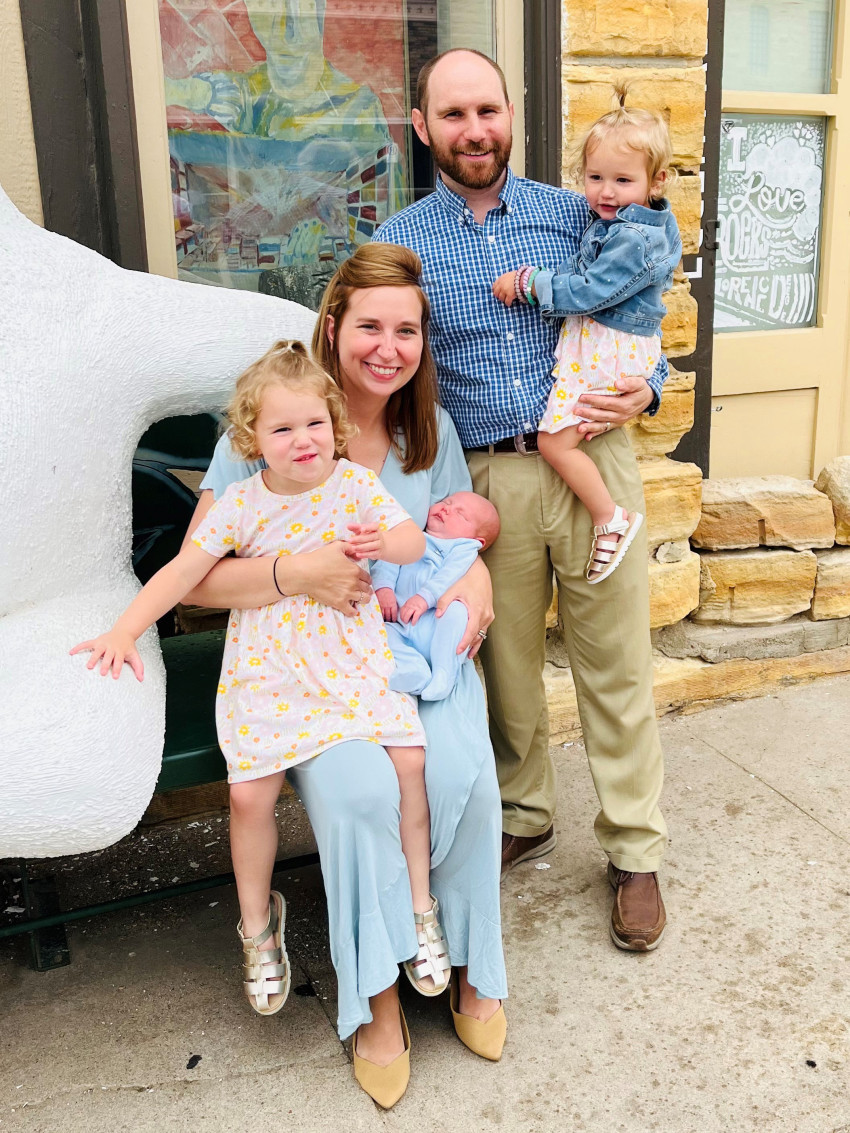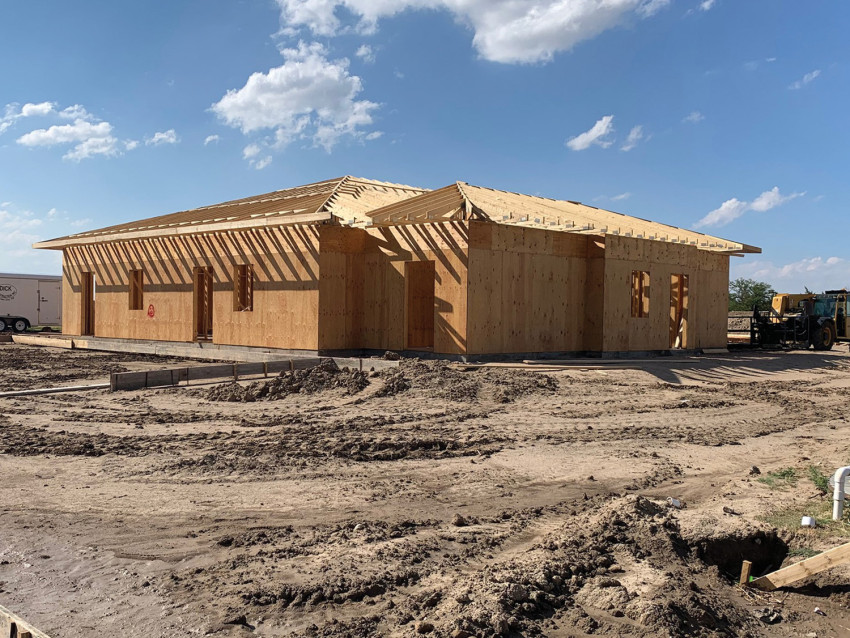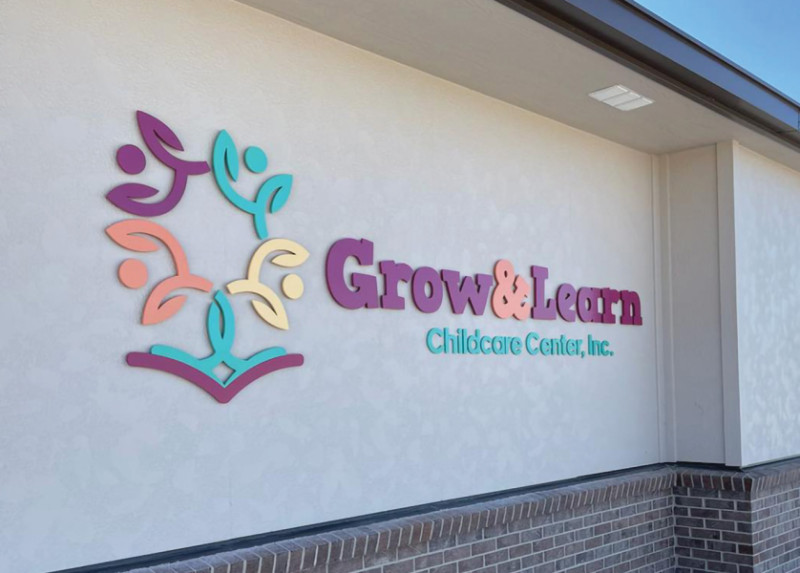By Greg Doering on November 8, 2023
How Kansas is helping solve the childcare dilemma in rural communities

Cooking dinner, washing dishes and doing laundry are often referred to as “invisible work” because the labor isn’t tracked by any metrics outside an individual household. While it’s not uncommon for a few dirty dishes to linger in the sink or for a load of clean laundry to remain unfolded in a basket, these instances of invisible work left undone don’t have repercussions throughout a community.
Childcare, on the other hand, does. Caring for children is often included in the unseen and untracked list of domestic chores. So much so that even those who have trouble finding childcare are unaware of how many others are also grappling with the problem of balancing family life and a career.
Filling out a survey on childcare made Alissa Kirchhoff realize she wasn’t the only one who had difficulty finding care for her children. Kirchhoff and her husband, who farm in Phillips County in north central Kansas, welcomed their third child this summer. She also works part-time as a veterinarian.
“It comes down to the struggle of do I go to work, or do I stay home and let my husband go to work,” Kirchhoff says. “At the end of the day, who gets to help on the family farm and how does that look? We all want to help, but there’s nobody there to stay home with the children.”
INFORMAL SOLUTIONS
While Kirchhoff wants to work part time, she’s still well under the 30-hour workweek she’d like to have because without reliable options for childcare, network of family and friends and the flexibility of her clients. That informal network has always existed to some extent, but its reliability has changed drastically over the years.
“When my husband was a kid, there was always a grandma who stayed home,” Kirchhoff says. “It was always just, go to grandma’s. Now grandma has an in-town job that supports the farm.”
Kirchhoff says there’s one childcare center and several home-based day cares available in her area, but even those have faced issues in recent years with staff turnover limiting the number of slots available.
“I actually think we’ve been really fortunate that we can patchwork care,” she says. “A lot of individuals my age have their future kids on waitlists (for childcare). So they haven’t even had the baby yet, and it’s on a list.”
THEN COMES BABY
The classic playground song — first comes love, then comes marriage — makes baby in a baby carriage sound so easy. But until recently some families delayed or decided against having kids in Wichita County in western Kansas because childcare was so difficult to find.
Nearly three-quarters of the county’s 2,100 residents live in Leoti, which is where Aimee Baker first held a community meeting to address the shortage of childcare in 2017. A childcare task force consisting of community members was assembled to tackle the issue.
“At the time we started this, we had two people who watched kids in their homes,” Baker says. “Neither one accepted children under the age of 2, so no one had a place to take infants.”
Baker says the task force looked at a variety of options like renting a building, using a church or even hauling in a modular unit as a temporary fix for the shortage before landing on building a childcare center from scratch.
“We really explored our options before we landed on the idea of a facility,” she says.
It took more than five years to build the Grow & Learn Childcare Center.
‘SHOCKING’ SHORT AGE
After deciding to pursue a new facility, the task force members, including Tammy Simons, partnering with Wichita County Economic Development, hired a consultant to conduct a feasibility study to identify the actual shortage and provide a path to address it sustainably. A once nearly invisible issue came into focus when the study estimated Wichita County was short 84 spaces.
“It was even kind of shocking for us,” Baker says. “We knew there was a problem, but to see it put into numbers — 84 slots from age 0 to school age. Once people saw the study, I think it helped bring into perspective what it could do for our community.”
COMMUNITY EDUCATION
Leoti’s Grow & Learn Childcare Center opened in the fall of 2022, and it was a learning experience for the community and for Baker and Simons, who both received licenses from the state to serve as directors for the center.
“In a community where no one had ever utilized a childcare center, we had to do a lot of education of our parents, our community, our staff — everybody — to support our reasoning of how we set our rates,” Simons says. “Ultimately this center was designed to sustain itself without grant funding.”
The center has capacity for 42 children, or half of the shortage identified in the initial study, but full-time enrollment is closer to 25 to 28 every day, with other spaces reserved for part-time or drop-in care. Weekly rates range from $160 to $185 depending on age.
“For a childcare center, we’ve been told our rates are OK for most families, but we’re really looking forward to when we can be a (Kansas Department for Children and Families) subsidy provider to help more of our families afford high-quality care,” Simons says.
ECONOMIC IMPACT
Wichita County Economic Development Executive Director Nikki Bjurstrom says the center has had a tremendous impact on the business community. Business owners are experiencing less absenteeism from employees thanks to reliable care. People are able to put more energy into and focus on their businesses or are able to start new businesses because of the progress made on the childcare issue.
“We are seeing a shift in perception about the future of Wichita County. It is not dying, it’s growing!” Bjurstrom says. “People are starting to understand that when you care for your youngest citizens, your young families, the community will grow and thrive. People are feeling less hesitant to start having the children they were waiting to have. Leoti has a bright future if we continue on this path.”
Simons says the center had a direct effect on 30 businesses and 45 employees because of the newly created childcare access.
“The idea of moving here is a lot more appealing when people know there’s a place for their children to go,” Baker says. “Doctors, nurses, teachers were leaving town for jobs elsewhere because childcare wasn’t available.”
STILL BUILDING
Although Leoti’s childcare center was built with a combination of grants, fundraising and other money, it still suffers from growing pains with staffing. Solving this problem is part of the journey.
“We’ve been using the term ‘grow our own’,” says Baker, who took a sabbatical from her job as an Extension agent to serve as the center’s director. “We’re paying for classes, paying for certifications, getting them everything they need to be able to work for us. On top of that, we have to pay a salary that’s competitive locally.
“Over the summer we had five high schoolers working for us,” she says. “That sets us up really well because they already have their qualifications, and they can work on breaks and come back in the summer.”
Despite the hiccups, Simons says similar projects are feasible in other rural areas of Kansas, but it will take time, volunteers and champions.
“I think one thing really important for rural communities is to get project champions, people who are either personally or professionally invested in the economic viability of their communities,” she says. “Do what fits your community’s needs. Take ideas from others and make them your own.”
STATE HELP
Leoti was ahead of the curve in identifying and addressing its local childcare shortage head on, but the state of Kansas is working to contend with the issue through its Child Care Capacity Accelerator, which aims to create affordable and accessible spaces for childcare in communities across the state.
The program, operated by the Kansas Children’s Cabinet and Trust Fund, awarded nearly $44 million in grants last June to 52 Kansas organizations working to expand childcare in their communities. To underscore the amount of work left to do, there were 105 applicants seeking more than $117 million for grants that required matching funds of at least 25 percent.
Struggling to find childcare isn’t just a rural issue — deciding as a family on the best place to care for your child or children isn’t an easy task no matter where you live. You have to consider financial factors, geographical factors (you don’t want to be late picking up from day care) and everything in between. Creating childcare options parents can trust means economic stability for the whole community — and that’s important in every small town and city in Kansas.
For more on rural childcare, check out Alissa Kirchhoff’s interview with Florence Becot and Shoshanah Inwood on Kansas Farm Bureau’s podcast, Inside Ag, on your favorite podcast streaming service or at www.kfb.org/InsideAg.
Becot and Inwood are rural sociologists studying childcare and farm safety.







